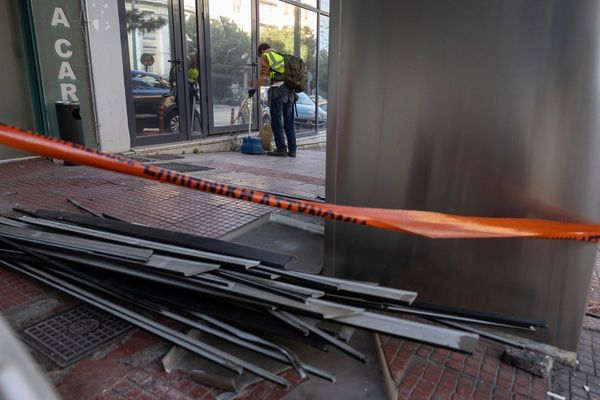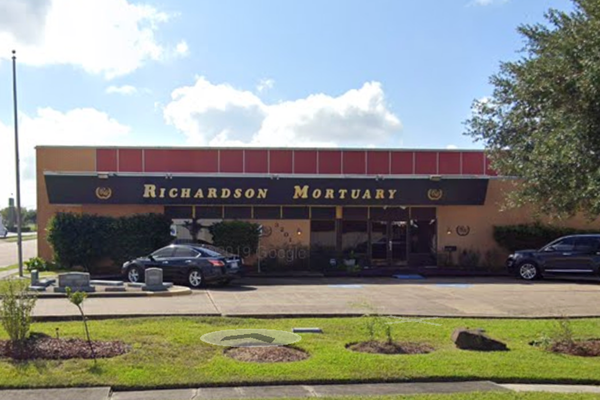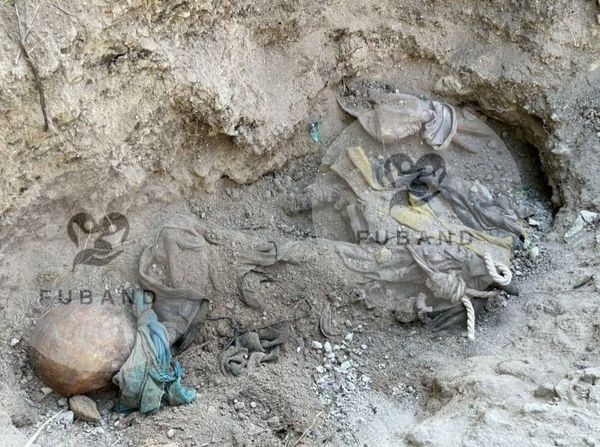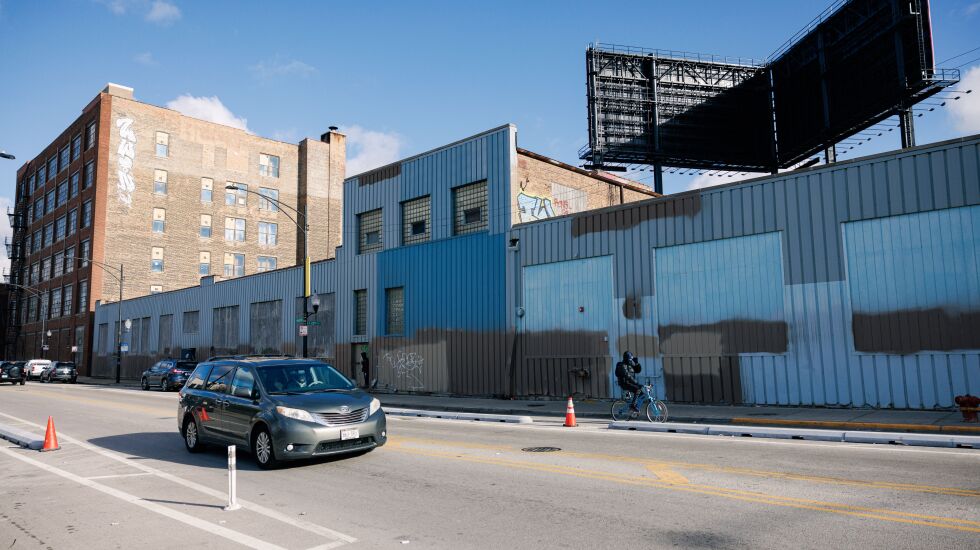
The night before a child died at a crowded migrant shelter in Pilsen, another set of parents there was up worrying whether their daughter would make it through the night.
The 2-year-old girl had a fever and they considered calling an ambulance but were dissuaded by staff who said they would have to pay for it, the parents said.
Instead “we spent the whole night up with her, watching her and keeping her cool with wet towels,” her father said.
The family is one of many staying at the shelter inside a converted warehouse near Cermak Road and Halsted Street, where 5-year-old Jean Carlos Martinez Rivero died Sunday after falling ill.
Migrants there say some illnesses are spreading due to overcrowded, unsanitary conditions and a lack of health services on-site. Public health officials have issued warnings about an alarming rise in chickenpox, which includes 400 cases diagnosed since January, mostly among migrants.
Several other individuals from the shelter, at 2241 S. Halsted, were transported by ambulance to a nearby hospital, and several have already been discharged with respiratory virus symptoms.
The cases do not appear related other than having originated in the same shelter, and symptoms are consistent with ongoing seasonal respiratory trends, the city said.
But those same officials on Tuesday said the 5-year-old’s death is not tied to any infectious disease. Nor is his death related to three more children who were taken to hospitals Monday, the officials said.
“The child does not appear to have died from an infectious disease, according to the Chicago Department of Public Health, and there is no evidence of an outbreak at the shelter,” Mayor Brandon Johnson’s office said in a statement Tuesday.
The statement said officials were looking into the situation.
Migrants have documented poor conditions at the shelter — by far the largest in Chicago, with over 2,300 people. More than half of them are minors.
Videos shared with reporters taken inside the shelter showed visibly sick children and water leaking through the ceiling onto cots.
Jean Carlos’ family had arrived in Chicago just over two weeks before he died. The city said his family arrived Nov. 30 and was taken to the Halsted shelter the same day. On the day the boy died, the Martinez family left the shelter for part of the morning and early afternoon, returning at 2:32 p.m., the statement said.
About 13 minutes later, shelter staff “witnessed a medical emergency and immediately responded by calling 911, after which staff began administering first aid to the child,” including CPR, the city said in its statement. He was pronounced dead at Comer Children’s Hospital.
A law enforcement source previously told the Sun-Times the boy was bleeding from the nose and mouth, had a fever of more than 100 degrees and had had diarrhea for days.
The boy’s mother was about to take him to a hospital Sunday but decided to bring him to the shelter’s showers first, according to a volunteer and social services provider who worked with families on the same floor.
That’s where he started bleeding and an ambulance was called, said Luciana Diaz, president of Panas en Chicago, a nonprofit that helps Venezuelans in Chicago.
“I’m more worried now,” Diaz said of the health and safety of the children in the shelter.
‘There aren’t enough doctors’
As for the other children who became sick, families and nearby providers believe illnesses are spreading because the shelter is overcrowded. Many say they feel left to fend for themselves for health care.
“The problem,” said another father outside the shelter, “is there aren’t enough doctors [at the shelter] to see everyone; there isn’t enough medicine for everyone.”
His family had been there about a week but understood that medical staff was there just for the very sick and even then, they would likely be sent to a provider elsewhere since equipment at the shelter was limited.
The city has been providing health care for many migrants through Cook County Health, which has seen over 18,200 patients across 79,000 visits. About a third of those patients are children, according to a county spokesperson.
In a statement late Monday evening, the city said partner health care providers visit shelters weekly, and everyone entering is provided “thorough health screenings.”
A source who wasn’t authorized to speak however said that the team visiting the Pilsen shelter can only see 30 patients every week.
Many migrants have started coming to Alivio Medical Center, a clinic just a few blocks from the shelter.
Dr. Stephanie Liou, director of pediatrics at the clinic, said she sees dozens from the shelter every week now.
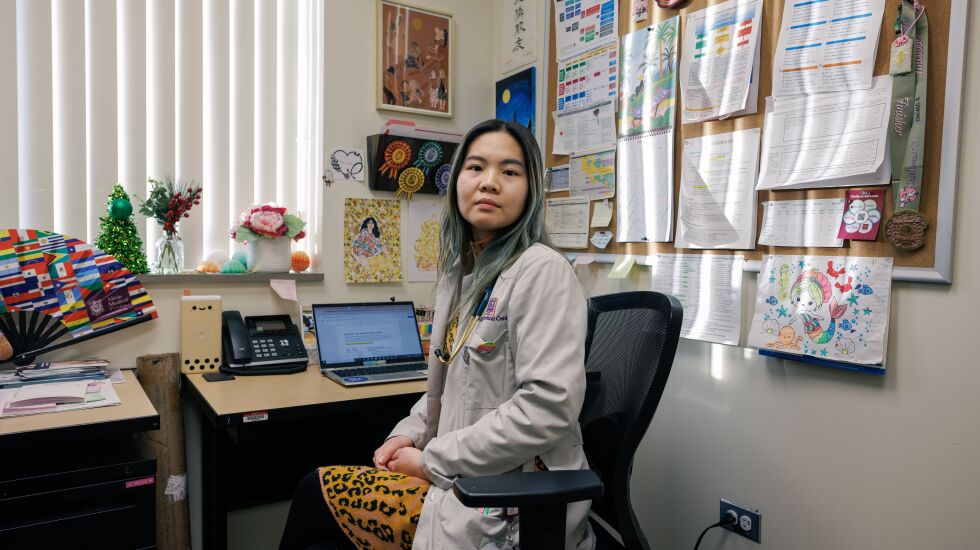
Many of the illnesses should be straightforward to treat, Liou said.
“A lot of these are vaccine preventable, or with simple measures we learned in 2020 [like] stay home for five days,” she said. “But when you don’t have a home it’s impossible to do.”
Officials have recorded the largest uptick in chickenpox cases since they began collecting data in 2005, and in an alert, the health department said 81% of its nearly 400 reported cases were among migrants in shelters.
Twenty percent of reported cases have been seen in an emergency department, and nearly 5% have been hospitalized, according to the alert. Ninety percent of shelter cases occurred in unvaccinated people, CDPH said.
Chickenpox usually causes mild symptoms but can be life-threatening in young people with weakened immune systems. It is highly contagious.
Many, however, have other illnesses, and the care they need isn’t available at the shelter.
One boy came to an Alivio pop-up clinic for a flu shot, but instead Liou sent him to the hospital for an infection on his face that should have been treated sooner.
Another child badly needed asthma medication, which Liou treated with medicine from the clinic’s own pharmacy.
“You shouldn’t have to be lucky to find yourself at the right clinic,” she said. “This doesn’t support anyone going to school, getting a job or being functional in society.”
There is at least one obvious solution, health providers say, and that is inviting in providers who have already been making calls at police stations.

“Let people who want to volunteer inside the shelters do it,” said Sara Izquierdo, the founder of a mobile health clinic that treated thousands of patients at police stations.
“There are experienced groups of health care providers in police stations who have treated the same patient population,” Izquierdo said. “Why can’t they be transitioned to shelter spaces?”
Michael Loria is a staff reporter for the Chicago Sun-Times via Report for America, a not-for-profit journalism program that aims to bolster the paper’s coverage of communities on the South Side and West Side.



